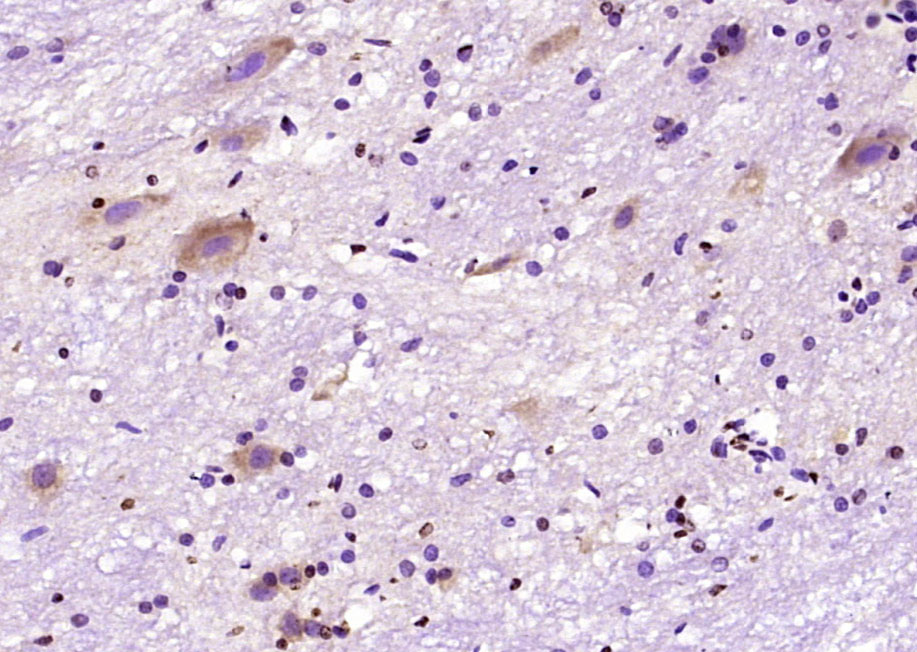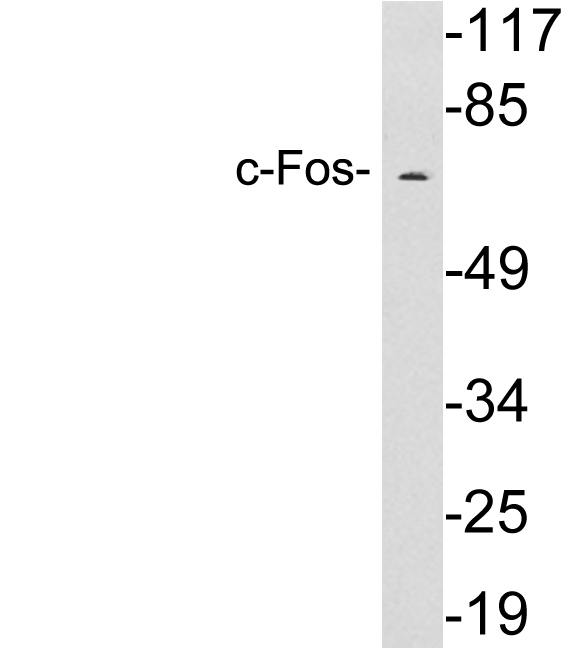c-Fos antibody [2G9C3]
GTX16902
ApplicationsImmunoFluorescence, Western Blot, ImmunoCytoChemistry
Product group Antibodies
TargetFOS
Overview
- SupplierGeneTex
- Product Namec-Fos antibody [2G9C3]
- Delivery Days Customer9
- Application Supplier NoteNot suitable for IHC frozen or parraffin-embedded sections. For ICC: Use at a concentration of 2.5 - 5.0 microg/ml. For WB: Use at a concentration of 2.5 - 5.0 microg/ml. Detects bands of approximately 55 and 62 kDa. Optimal dilutions/concentrations should be determined by the researcher.
- ApplicationsImmunoFluorescence, Western Blot, ImmunoCytoChemistry
- CertificationResearch Use Only
- ClonalityMonoclonal
- Clone ID2G9C3
- Concentration0.2 mg/ml
- ConjugateUnconjugated
- Gene ID2353
- Target nameFOS
- Target descriptionFos proto-oncogene, AP-1 transcription factor subunit
- Target synonymsAP-1, C-FOS, p55, protein c-Fos, FBJ murine osteosarcoma viral (v-fos) oncogene homolog (oncogene FOS), FBJ murine osteosarcoma viral oncogene homolog, Fos proto-oncogene, AP-1 trancription factor subunit, G0/G1 switch regulatory protein 7, activator protein 1, cellular oncogene c-fos, proto-oncogene c-Fos, transcription factor AP-1 subunit c-Fos
- HostMouse
- IsotypeIgG2a
- Protein IDP01100
- Protein NameProtein c-Fos
- Scientific DescriptionThe Fos gene family consists of 4 members: FOS, FOSB, FOSL1, and FOSL2. These genes encode leucine zipper proteins that can dimerize with proteins of the JUN family, thereby forming the transcription factor complex AP-1. As such, the FOS proteins have been implicated as regulators of cell proliferation, differentiation, and transformation. In some cases, expression of the FOS gene has also been associated with apoptotic cell death. [provided by RefSeq, Jul 2008]
- Storage Instruction2°C to 8°C
- UNSPSC12352203
References
- Wu L, Wu Y, Liu J, et al. Sodium Leak Channel in Glutamatergic Neurons of the Lateral Parabrachial Nucleus Modulates Inflammatory Pain in Mice. Int J Mol Sci. 2023,24(15). doi: 10.3390/ijms241511907Read this paper







